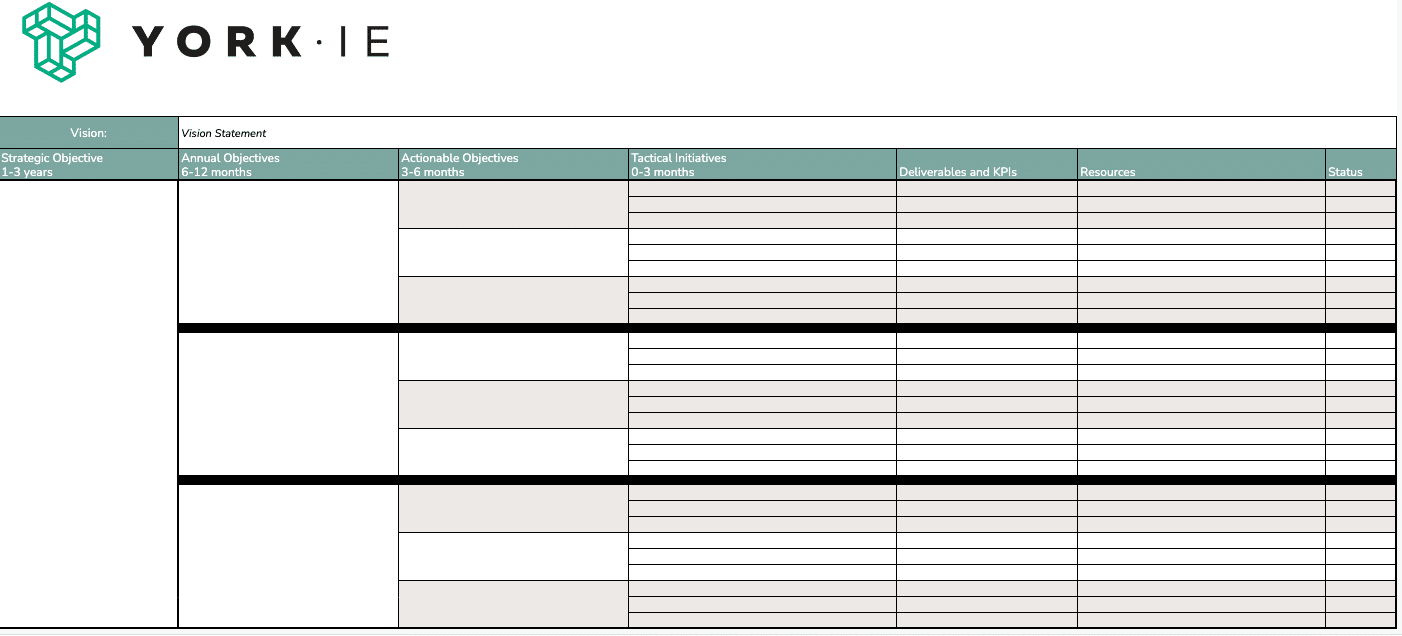A business growth plan helps startups create clear alignment and accountability. We want to make sure all founders and their teams can reap the benefits, so we’ve put together a business growth plan template.
A plan with achievable and measurable goals can make the difference between success and stagnation. This holds true for most people, from entrepreneurs to athletes. Identifying where you want to end up — and the steps you need to take to get there — will ensure you’re acting purposefully and efficiently.
What Is a Business Growth Plan?
A business growth plan is a living document that enables organizations to develop the strategies and implement the tactics needed to accomplish their goals. It also includes data-driven checkpoints to help executives and other stakeholders evaluate their progress and measure success.
Startup founders and their leadership teams should review their progress on a quarterly basis and update their growth plans as necessary. It’s only natural to want to give your projections a chance to bear fruit over a longer period of time, but the reality is, one quarter is usually enough of a sample size. If you’ve only been around for a few years, one quarter is actually a significant percentage of your company’s entire existence.
So be honest with yourself about what’s going on. If you were close to achieving your goals but not quite there, it’s not necessarily the end of the world. If you were far off, figure out why. Then ask yourself, “What do we need to do to get back on track?”
What to Include In a Business Growth Plan
Every department, from sales and marketing to product development, must help build your business growth plan on a detailed level:
- Finance: How does your plan affect your capital strategy? What will be your key performance indicators?
- Product: Does your plan square with the research you’ve done to identify and address market and customer needs?
- Go-to-market: Are your sales and marketing motions set up to properly support your plan?
This collaboration helps achieve alignment and empowers you to work faster and smarter. It also gets your board of directors aligned to what success looks like for your startup company in the coming months and years.
How Do I Write a Business Growth Plan?
To write a business growth plan, break down your long-term goals into actionable tasks:
- Define your vision statement.
- Set strategic objectives for the next one to three years.
- Set strategic objectives for this year.
- Create action items for each objective.
- Measure and evaluate your progress.
I like to think of a business plan as a nesting doll. Within each goal, you have smaller objectives that help you achieve your vision. Over time, small steps add up to set you in the right direction. This approach breaks down a business plan using the popular Hoshin Kanri Strategic Planning Model.
Our business growth plan template will help you organize your thoughts, but I’ll explain a little further here:
1. Vision
Most startups already have a vision statement: the long-term, overarching, big-picture mission of their company.
Example: At York IE, our vision is to change the way startups are built, scaled, and monetized.
2. Strategic Business Objectives
Break down the vision into two or three broad business growth goals to achieve in the next one to three years. These goals are relevant to each arm of your business but mean something different within each team.
Example: something simple yet powerful, like “increase our customer base by X%” or “achieve $X in ARR, representing Y% growth year over year.”
3. Annual Objectives
For each strategic business objective, you’ll need two or three annual objectives to help you make progress. These goals should be more focused and measurable over the course of a year.
Example: If your strategic objective is to achieve $X in annual recurring revenue, an annual objective for the go-to-market team might be, “Increase team quota carry through hiring and deploying new sales enablement tools.”
4. Action Items
For each annual objective, generate three to five tangible, impactful and actionable tasks. These are items you can check off on a list as you go along.
Examples: Launching a hiring campaign to add 10 new team members, completing a budget that demonstrates 0% to 5% profitability or rolling out a significant new product feature.
5. Measurement
You’ve surely heard that numbers don’t lie. Of course, I am a numbers person, but it’s true! Quantitative benchmarks help us objectively determine if we’re on track.
Examples: Generate X number of leads over the next 12 months, increase website traffic by X%, maintain gross margin between X% and Y%, achieve revenue per employee of $X.
Why Are Business Growth Plans Important?
Here are four reasons why a business growth plan is important:
- It drives strategy formulation (where you want your business to get to) and implementation (how you get there).
- It ensures that everyone in your business, from advisors to freelancers to leadership teams, knows what they’re trying to achieve as a collective group. This instills confidence and empowers everybody to move quickly, because they know they’re heading in the right direction.
- A growth plan also empowers individuals to work independently, reducing the need for constant meetings to get realigned.
- Lastly, and maybe most importantly, it promotes measuring success with real metrics instead of gut feelings.
What Factors Affect Business Growth?
Several factors — both in and out of your control — can affect your business growth, including:
- winning, retaining and expanding your customer base;
- your ability to execute on your growth strategies effectively; and
- the maturation of your product to address expanded and evolving market needs.
Your personal goals as a founder will also significantly shape how you approach your growth. Tailor your efforts to align with your vision, whether that involves broad market penetration or specialized services offerings.
Contrary to popular belief, business growth isn’t just about raising venture capital or hitting high valuations. True growth focuses on revenue, profitability and overall company health. Raising money can be beneficial, but it shouldn’t be the default goal.
Get Started with a Business Growth Plan Template

There’s plenty more to know, but you don’t need to be an expert to get started.
Download the business growth plan template below, grab your leadership team and start identifying the steps you’ll take to achieve your startup’s vision this year — and beyond.



